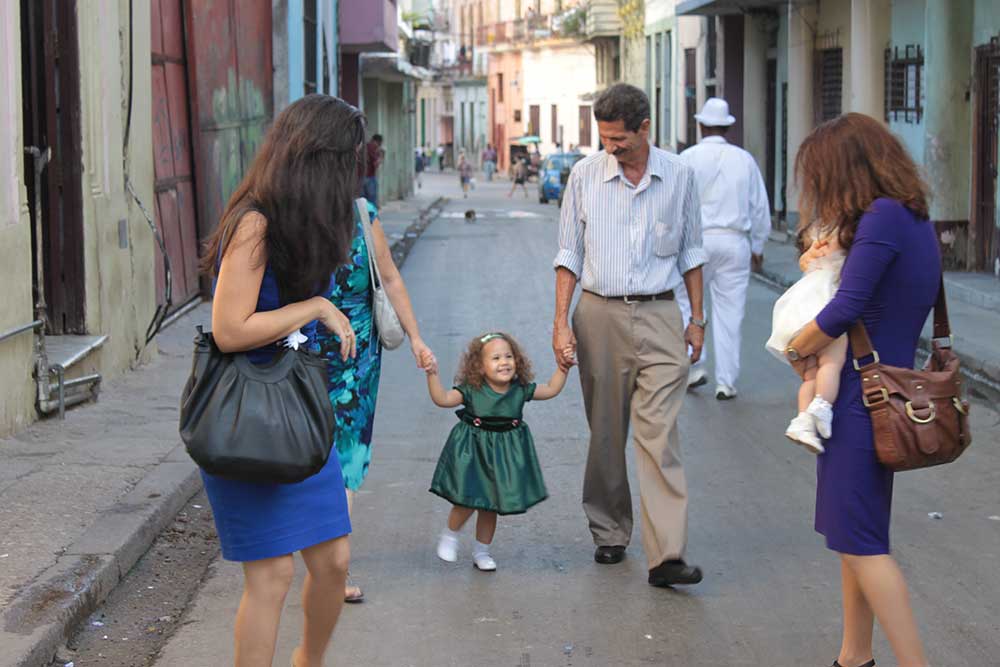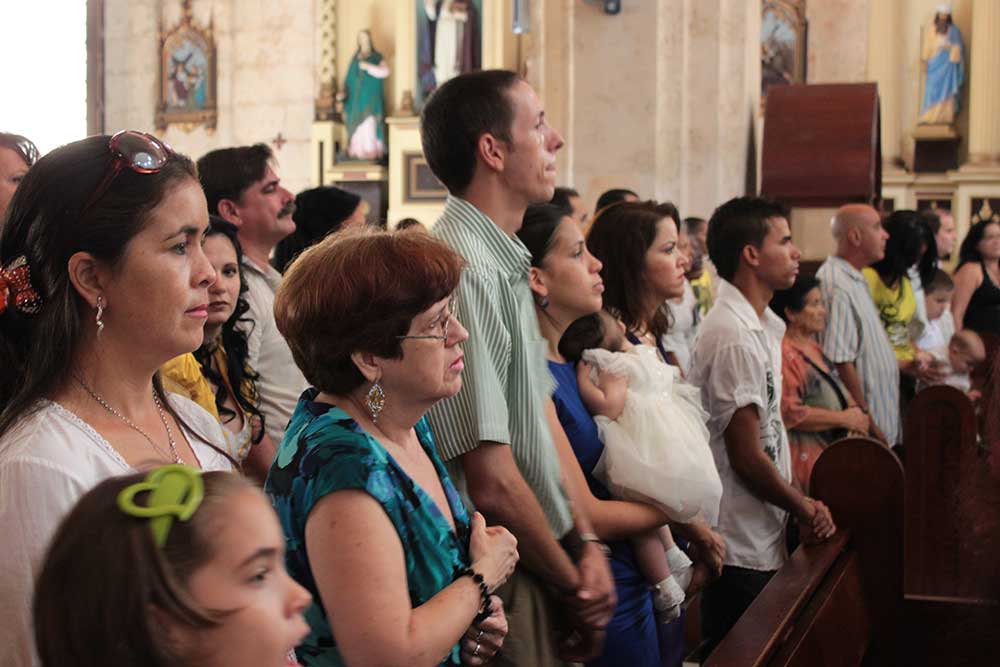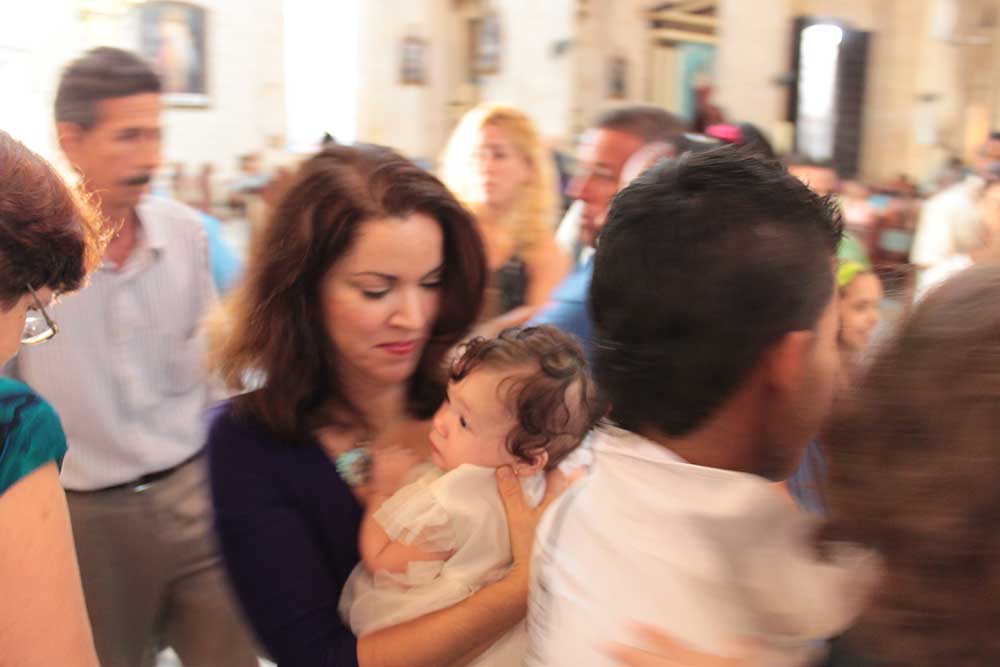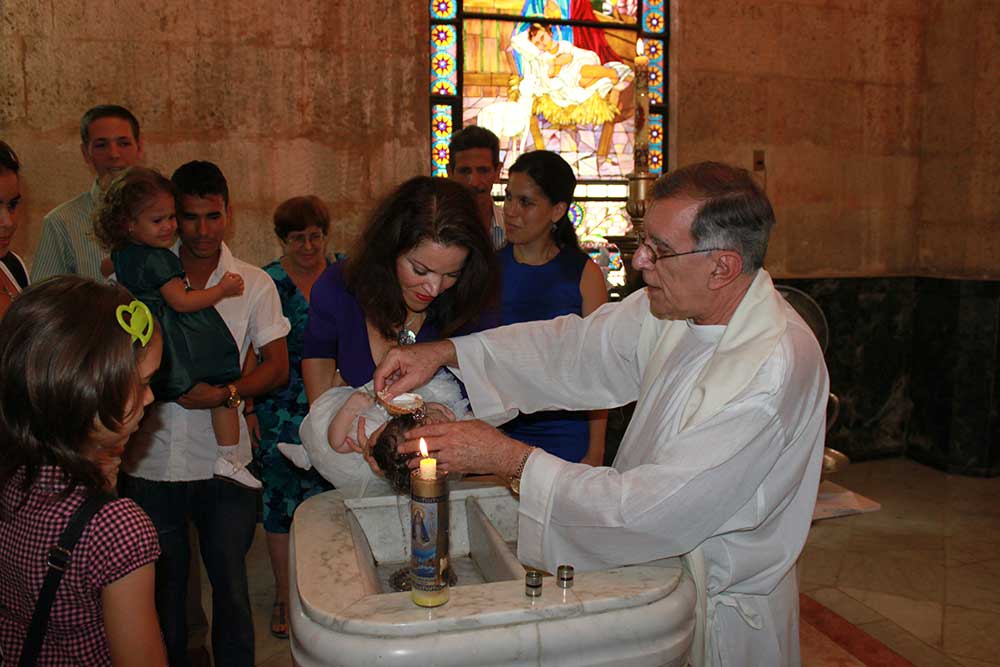After decades of enforcing conformity to the ideals of atheism, the Cuban Communist Party decided to adopt secularity and allow, for the first time, even its own members to openly practice a religion. Because most Cubans had no knowledge of Catholicism as adults, they often turned to visiting relatives (like me) who were lifelong Catholics to serve as godparents to guide their children’s entry and journey in the faith. The day that I served as madrina [godmother] for the baptism of two-year-old Alicia and baby Isabela there were more than forty families gathered at the Iglesia de la Virgen de la Caridad del Cobre, a historic old church bordering the Barrio Chino in Centro Habana. This was the site where pastor Father Boza-Masvidal once offered sanctuary to opponents of the Batista regime in the 1950s and even reportedly stored weapons for the 26th of July Movement in the basement. It was also the parish where my parents were married in 1961, shortly after Fidel ordered his expulsion along with that of 900 other priests to Spain. The day of the baptism was deeply emotional. As we waited our turn for more than three hours, drenched in sweat, the crowd’s collective joy never diminished. Alicia’s enthusiasm kept me afloat: at eight in the morning, she danced the twenty-minute walk down Centro Habana’s streets to the Church and then audibly exalted the Crucifix as it passed at the front of the procession of Franciscan priests: Wow, Madrina! she said. Afterwards, I caught her and her cousins trying to play hide-and-go-seek in the confessional. Barrio Chino, Havana, November 2011.






Photographs by Reny Díaz Arango.
